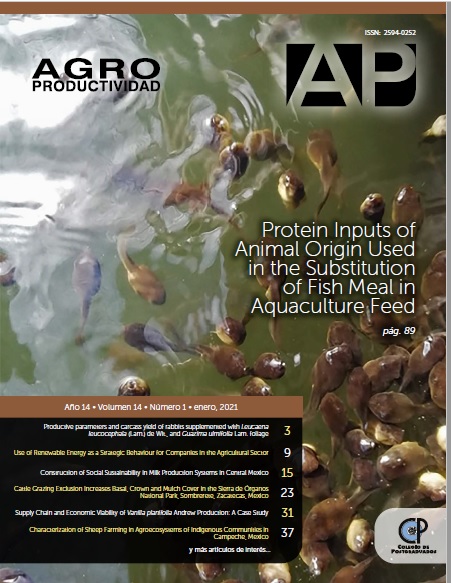Physicochemical, microbiological, and nutrimental quality of tomato industrial by-product and its valorization as source of carotenoid rich oil
##plugins.themes.bootstrap3.article.main##
Keywords
carotenoides, aceite de tomate, calidad, subproducto industrial, valorización
Resumen
Objective: To valorize an industrial tomato byproduct from Northwest Mexico,
based on the evaluation of its physicochemical, microbiological, and nutritional
quality and it´ s potential as a functional ingredient to obtain a carotenoids rich oil.
Design / methodology / approach: Tomato by-product was collected from the
food industry and oven-dried. The fresh and dry tomato by-product quality was
evaluated through physicochemical, microbiological, proximal composition, dietary
fiber, and minerals analysis. HPLC carotenoids analysis was performed from
Soxhlet n-hexane extracted oil and dry-byproduct.
Results: The by-product showed 81 and 9.7% of humidity; 0.26 and 0.53% meq of
citric acid for titratable acidity in fresh and dried, respectively, and 4.74 ° Brix in
fresh. Their color got paler due to the drying process, turning less red. The aerobic
mesophylls, total coliforms, fungi and yeasts microbiological analysis in a fresh by-
product (170, <10, <10 CFU / g-1, respectively) and dried (180, <10, ?95 CFU / g-
1, respectively), proved their acceptable microbiological safety. Their dietary
insoluble (52%) and soluble (9%) fiber stands out, protein (14%), lipids (9.09%)
content, as well as Mn> Zn> Fe> Cu, and K> P> Ca> Mg > Na. The carotenoids rich oil was 13 times more concentrated in lycopene (4.98 mg g-1) and twice ?-
carotene (0.48 mg g-1) content compared to the dry by-product from which it
comes (0.38 mg g-1 and 0.22 mg g-1, respectively).
Limitations on study / implications: Great efforts were required to dry high
amounts of the tomato industrial by-product.
Findings / Conclusion: The tomato industrial by-product from Northwest Mexico
possesses suitable physicochemical, microbiological, and nutritional quality to be
used as a functional ingredient to generate new products, for example, a
carotenoid-rich oil.

